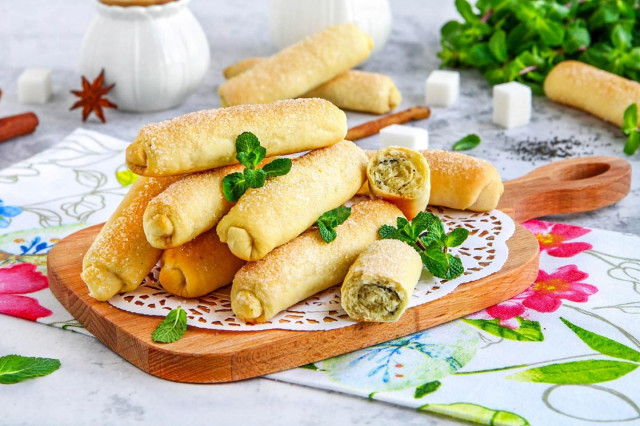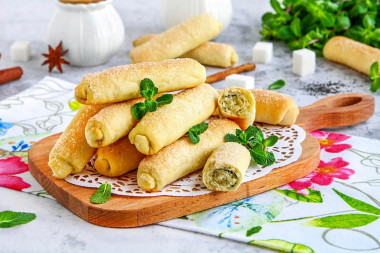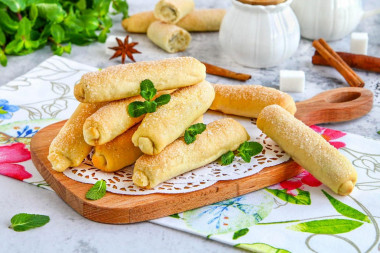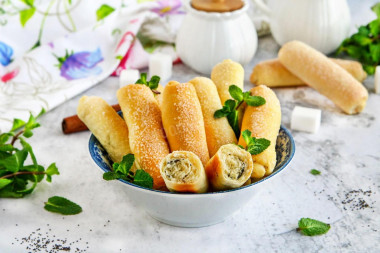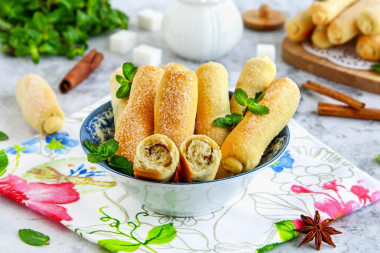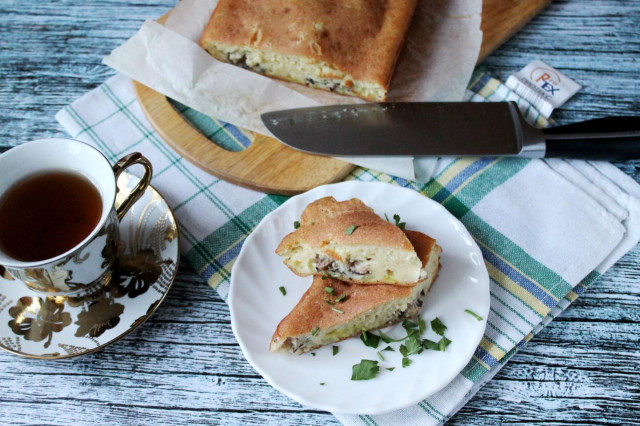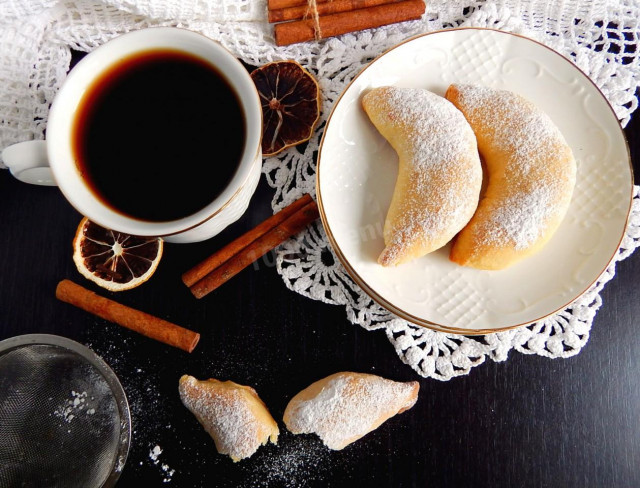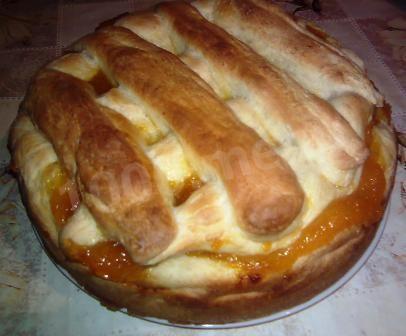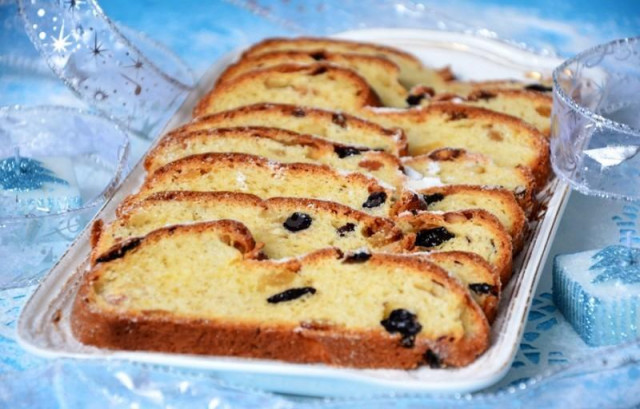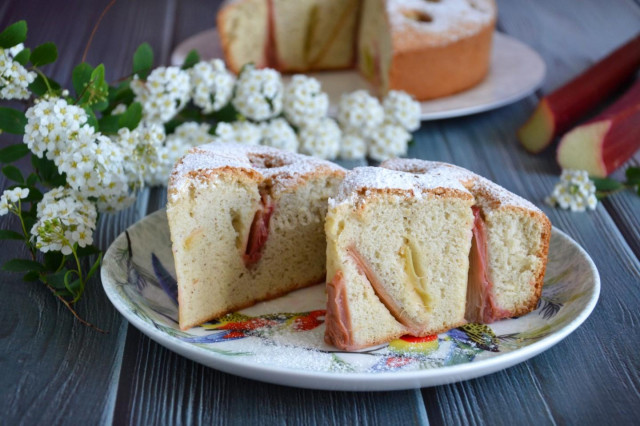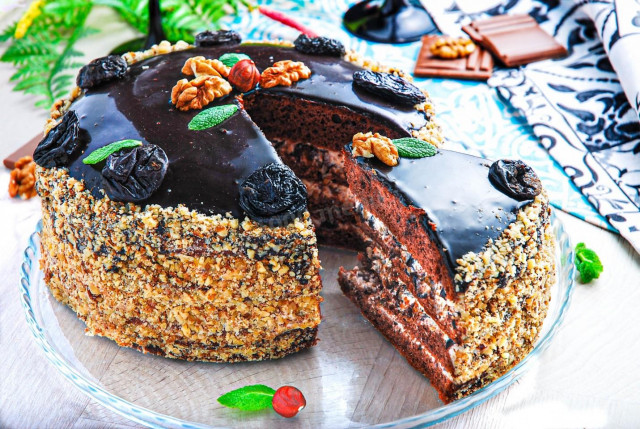Composition / ingredients
Step-by-step cooking
Step 1:
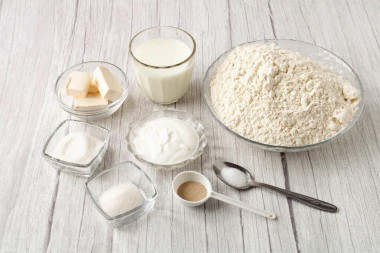
How to make cookies from yeast dough? Measure out the necessary ingredients. Take wheat flour of the highest grade. Milk and sour cream will suit any fat content. Get the sour cream in advance so that it is not cold. Heat the milk slightly.
Step 2:
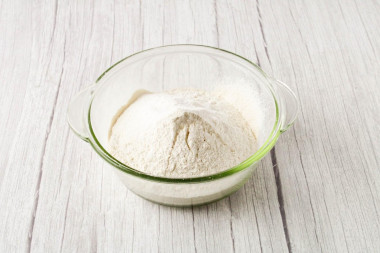
In a wide bowl with high sides, sift the flour. The flour will be enriched with oxygen, and the dough will rise easily. It will turn out lush and airy.
Step 3:
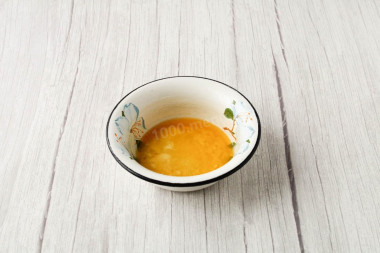
Dissolve the butter over low heat, cool slightly.
Step 4:
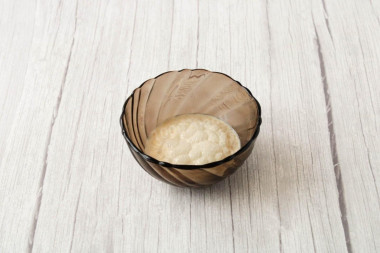
In a small bowl, combine the yeast, 1 tsp sugar and about half the milk, mix. Leave the yeast to activate for 10-12 minutes. A yeast "cap" should appear on the surface.
Step 5:
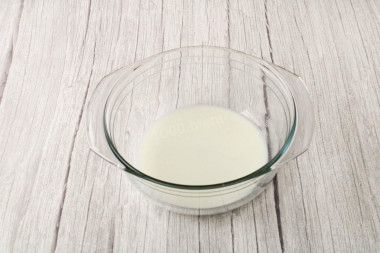
In a large bowl, dissolve salt, sugar and vanilla sugar in warm milk.
Step 6:
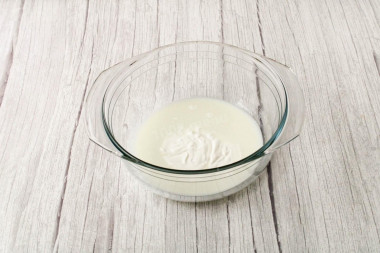
Add sour cream, mix.
Step 7:
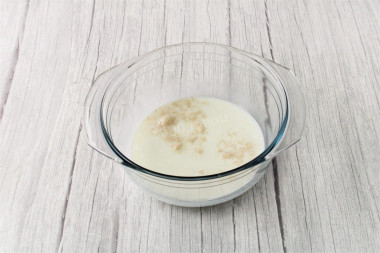
Pour in the yeast mixture, mix lightly.
Step 8:
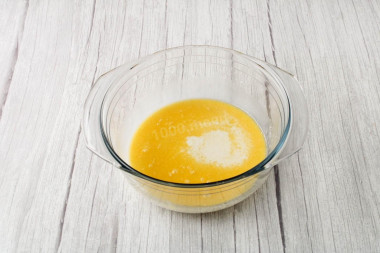
Add the melted non-hot butter, mix.
Step 9:
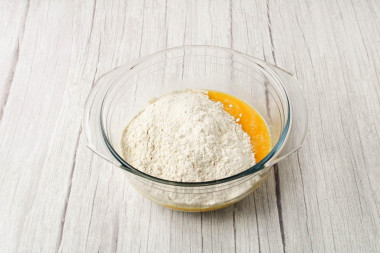
Pour the sifted flour into the resulting mixture. Do not pour out all the flour at once, it may need less. It depends on the properties and quality of the flour used.
Step 10:
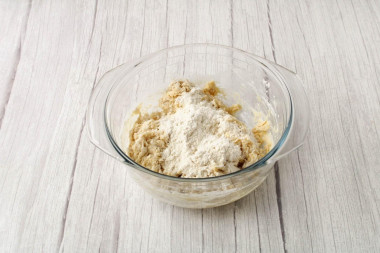
Mix the mass first with a spoon. Pour the rest of the flour in small portions, while stirring the dough with your hands. Do not add a lot of flour so that the dough does not turn out to be steep.
Step 11:
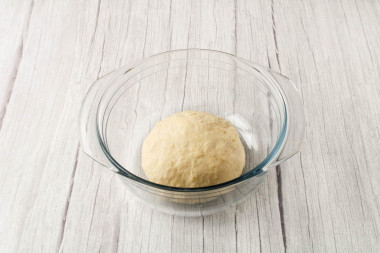
The dough should be soft, pliable, not sticky to the hands. Cover the dough with a towel or cling film and leave in a warm place to rise for about 1.5 hours.
Step 12:
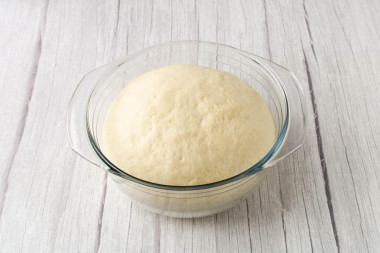
The dough will increase in volume 2-2.5 times.
Step 13:
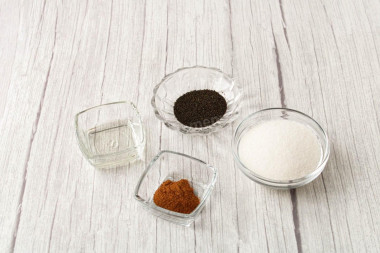
I made cookies with two fillings: cinnamon and poppy seeds.
Step 14:
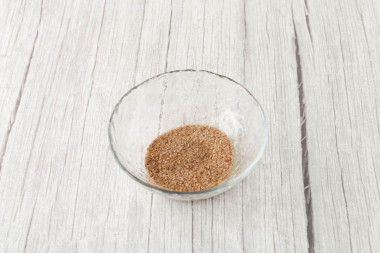
Combine a little sugar (1.5-2 tablespoons) with cinnamon, mix. Add the amount of spice to taste.
Step 15:
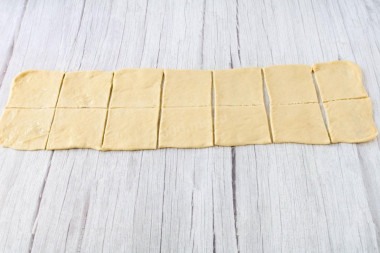
Gently knead the dough, put it on the table, lightly sprinkled with flour. Divide the dough into 2 parts. Roll out one part of the dough into a rectangle, the size of which will depend on the desired size of the cookie. Divide the dough into equal parts of a square or rectangular shape.
Step 16:
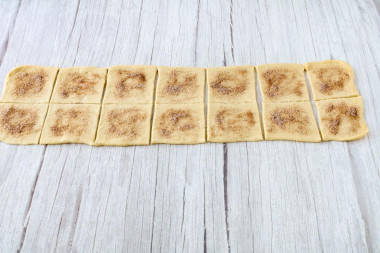
Lightly brush each part of the dough with vegetable oil. Then sprinkle with cinnamon and sugar.
Step 17:
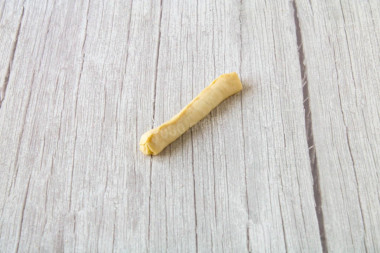
Roll each part of the dough into a tube. Connect the edge well so that the cookies do not unfold during baking.
Step 18:
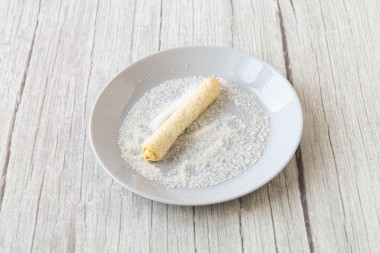
Dip the formed cookies in sugar. You can roll the cookies on all sides or just on top.
Step 19:
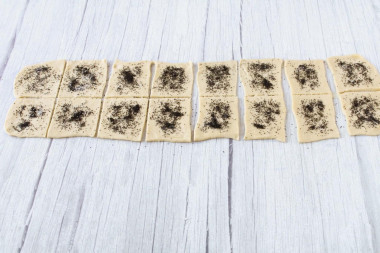
Do the same with the rest of the test. Lightly brush each part of the dough with vegetable oil, sprinkle with sugar and poppy seeds.
Step 20:
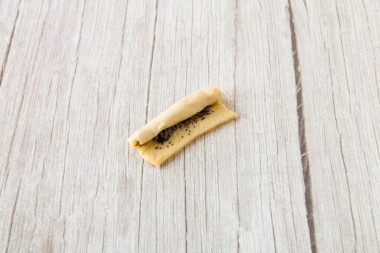
Form cookies with poppy seed filling. Dip the top in sugar.
Step 21:
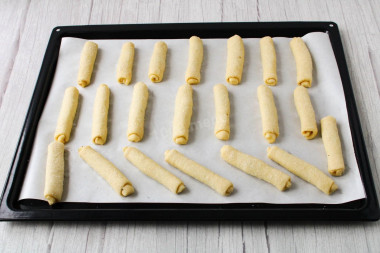
Place the cookie blanks on a parchment-lined baking sheet at some distance from each other. Cookies do not require proofing, so bake it right away. I couldn't fit all the cookies on one baking sheet.
Step 22:
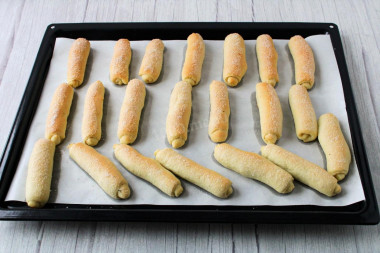
Bake yeast cookies in a preheated 180C oven for 20-25 minutes until golden brown. Determine the cooking time, taking into account the peculiarities of your oven.
Step 23:
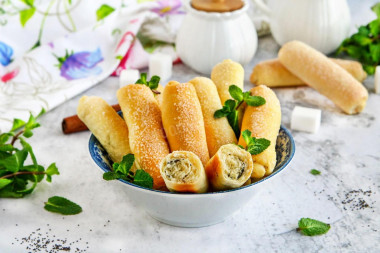
Cool the finished cookies and serve them to the table. Enjoy your meal!
Important! Using dry yeast, it should be borne in mind that they occur in two forms: active and instant (read the instructions carefully before use!).
Active dry yeast looks like beads or small balls. Before applying them, they must be brought out of the "sleep mode". To do this, the active yeast is diluted in warm sweet water, milk or whey. The resulting bubbles, foam or "cap" indicate that the yeast is ready for further use. Active dry yeast must be brought to complete dissolution in the liquid, otherwise, due to the remaining grains, the dough may not rise and the baking will be spoiled (yeast grains that have not dissolved in the liquid and got into the dough will not disperse on their own, which means they will not work).
Instant dry yeast is easier to use. They do not need to be activated before use. Such yeast, along with other ingredients, is simply added to the dough. As a result, the baking time is reduced.
It should also be remembered that both types of dry yeast may differ in their activity from different manufacturers.
Keep in mind that everyone's ovens are different. The temperature and cooking time may differ from those specified in the recipe. To make any baked dish successful, use useful information about the features of ovens !
So that the oven has time to heat up to the desired temperature, turn it on in advance (10-20 minutes before the start of cooking).
Calorie content of the products possible in the dish
- Whole cow's milk - 68 kcal/100g
- Milk 3.5% fat content - 64 kcal/100g
- Milk 3.2% fat content - 60 kcal/100g
- Milk 1.5% fat content - 47 kcal/100g
- Concentrated milk 7.5% fat content - 140 kcal/100g
- Milk 2.5% fat content - 54 kcal/100g
- Sour cream with 30% fat content - 340 kcal/100g
- Sour cream of 25% fat content - 284 kcal/100g
- Sour cream with 20% fat content - 210 kcal/100g
- Sour cream of 10% fat content - 115 kcal/100g
- Sour cream - 210 kcal/100g
- Granulated sugar - 398 kcal/100g
- Sugar - 398 kcal/100g
- Butter 82% - 734 kcal/100g
- Amateur unsalted butter - 709 kcal/100g
- Unsalted peasant butter - 661 kcal/100g
- Peasant salted butter - 652 kcal/100g
- Melted butter - 869 kcal/100g
- Vegetable oil - 873 kcal/100g
- Poppy (seed) - 556 kcal/100g
- Mac - 556 kcal/100g
- Salt - 0 kcal/100g
- Wheat flour - 325 kcal/100g
- Vanilla sugar - 379 kcal/100g
- Dry yeast - 410 kcal/100g
- Ground cinnamon - 247 kcal/100g

